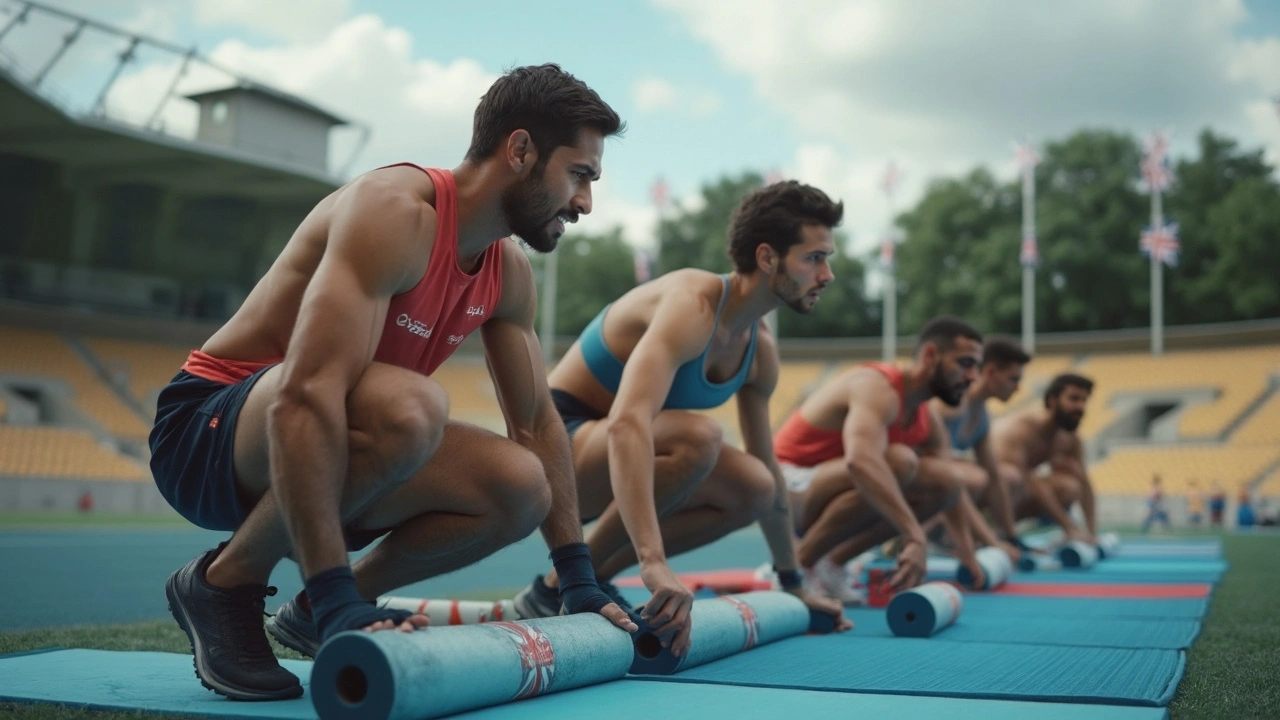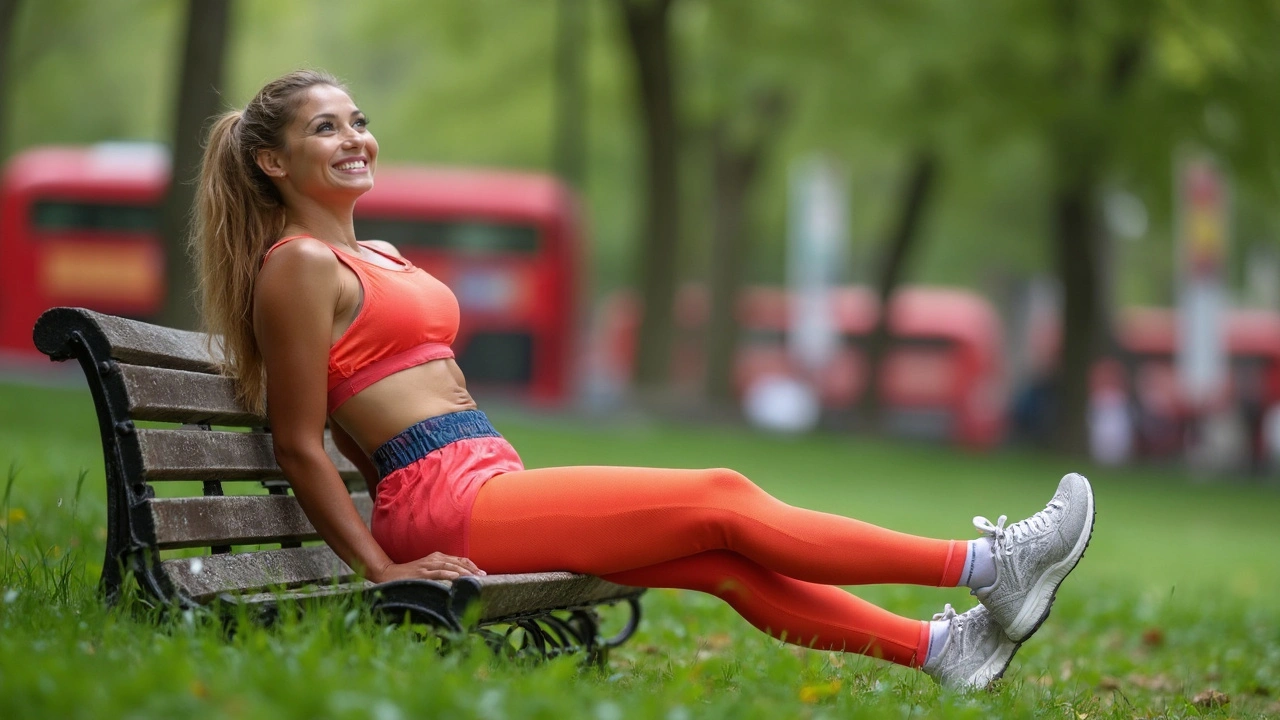Ever felt wrecked after a tough game or a heavy workout? Sports massage isn’t just a treat or a splurge—it’s a recovery tool serious athletes use to bounce back quicker and train harder. This isn’t your average spa day; sports massage targets sore muscles, sticky knots, and those deep aches you can’t stretch away.
What surprises most people is that you don’t need to be a pro to get results. Weekend warriors, runners prepping for their first marathon, even high school athletes—pretty much anyone pushing their body can get less pain and more mobility with regular sessions. Science backs this up: one review from the American Journal of Sports Medicine found that athletes who used massage after workouts reported less soreness and moved better within 24 to 72 hours. That’s real-world impact you’ll notice after a tough training cycle or back-to-back games.
- How Sports Massage Really Works
- Benefits Athletes Can Actually Feel
- Smart Ways to Use Massage in Training
- Things No One Tells You Before Your First Session
How Sports Massage Really Works
Let’s break it down: What actually happens when you get a sports massage? Your muscles are made up of bundles of fibers. When you push hard in workouts, those fibers can develop small tears and knots, which is why you get sore or stiff. Sports massage uses pressure and specific movements to help loosen those tight spots and improve blood flow to the area.
When the massage therapist works on you, they use their hands, elbows, or forearms to target the muscles you’ve worked the hardest. This action does a few key things:
- Boosts blood flow, bringing fresh oxygen and nutrients to tired muscles.
- Helps flush out waste like lactic acid that makes your muscles feel heavy and cramped.
- Breaks up scar tissue and knots, making it easier for your muscles to move the way they should.
- Signals your nervous system to relax, which can lower tension across your whole body.
There’s some pretty solid science behind these effects. For example, after a tough session, blood flow to massaged muscles can jump by up to 30%. That means you recover faster because your body has what it needs to repair itself.
| Massage Benefit | Typical Impact |
|---|---|
| Blood flow increase | Up to 30% rise |
| Reduction in soreness | Within 24-72 hours |
| Reduced muscle tightness | Noticeable after one session |
Another cool thing: sports massage can target the type of soreness you get from everyday training, not just big injuries. So, if you’re feeling tight after a speed session or your lower back gets cranky from lifting, this is a powerful tool you can actually feel working.
Benefits Athletes Can Actually Feel
This isn’t just hype—sports massage offers benefits you can measure. The biggest win? It actually helps your body recover faster and better than just resting or stretching alone.
- Muscle soreness drops noticeably: A 2016 study showed that athletes cut delayed-onset muscle soreness (DOMS) by almost half when they added massage after workouts. That means you’re less stiff and achy the next day, which lets you hit your next session with more power.
- Circulation gets a boost: You know that tired, sluggish feeling after intense training? Massage improves blood flow so your muscles get more oxygen and nutrients. That speeds up waste removal—bye, lactic acid!
- Flexibility goes up: Tense, tight muscles hold you back. Regular sports massage helps loosen muscle fibers and fascia, increasing range of motion. For runners and lifters especially, you’ll notice you can move easier and perform movements with better form.
- Injury risk drops: Tight or imbalanced muscles often lead to overuse injuries. Massage breaks up knots and scar tissue and evens out muscle tone, which means fewer sidelined weeks.
Some folks wonder if it’s all in your head. There’s more to it. Here’s a quick look at some real numbers from recent sports science research:
| Benefit | Average Improvement After Massage |
|---|---|
| Muscle Soreness (DOMS) | Reduction by 30-50% |
| Flexibility (Hamstring ROM) | Increase by 7-20% |
| Sprint Recovery Time | 20% faster muscle recovery |
One more plus: you get better body awareness. As you learn how your muscles feel before and after a session, you’re also more likely to spot possible injuries early. No more guessing if it’s just a tweak or something that needs real attention.

Smart Ways to Use Massage in Training
Getting the most from sports massage means knowing when and how to fit it into your training plan. You don’t need daily sessions—timing is everything. Right after a tough workout is when your muscles are begging for help. That’s where recovery really speeds up. If you’re prepping for a competition, hitting the massage table 24 to 48 hours before can help you feel loose, not sluggish.
Some athletes use massage as pre-game warm-up, but keep those lighter and shorter so your muscles wake up without feeling too relaxed. For deep recovery, a heavier session a day or two after a grueling event gives your body time to soak up the benefits without messing with healing.
Here’s a snapshot of smart scheduling:
| Training Phase | Best Massage Timing | Typical Session Focus |
|---|---|---|
| Heavy Training Load | 1-2 times/week after intense sessions | Reduce soreness, boost circulation |
| Rest Period/Off-Season | Every 2-3 weeks | General maintenance, injury prevention |
| Right Before Competition | 24-48 hours prior | Light work for muscle looseness |
| Post-Competition | Within 24-48 hours | Deep work on specific tight spots |
Don’t just wing it—talk to your massage therapist or coach about where you’re tight and what your sport demands. For example, runners might need more work on their calves and hamstrings, while tennis players often carry tension in the shoulders and forearms.
- Stay hydrated before and after your session—massage moves waste out of your muscles, but you need water to flush it for real.
- Skip super intense sessions right before big events. You want to feel ready, not worn out.
- If you’re on a strict budget, focus on getting a session during your highest training loads or straight after hard races.
Mixing sports massage into your training isn’t just for injuries. It’s about staying ahead of aches, recovering faster, and maybe even grabbing a personal best the next time you compete.
Things No One Tells You Before Your First Session
Walking into your first sports massage can feel weird if you don’t know what to expect. No one really talks about the small but important stuff that comes up during that first hour on the table.
First off, communicate. Don’t sit there in silence if a technique feels painful or if you just don’t like something. Therapists aren’t mind readers, and your feedback is key—they can go lighter, skip an area, or adjust things in real time. It’s not about tolerating pain to look tough. A little discomfort is normal, especially if you’ve got old knots, but you should never feel sharp pain or leave feeling worse.
Clothing is another surprise for newbies. Most people strip down to a level they’re comfortable with (usually underwear), but you should never feel pressured. Therapists are pros at keeping you draped the right way, so only the area being worked on is exposed.
After your first sports massage, you might feel a bit sore—like you just finished a hard gym session. Drinking water can help flush out waste products released during deep work. You can also ask your therapist for gentle stretches or aftercare tips. Most people are back to normal (or better) by the next day.
If you’re coming in with a fresh injury, don’t expect miracles right away. Acute injuries (basically less than 48 hours old) usually need time before any deep work, so flag it to your therapist. They’ll know the difference between a tweak that needs attention and something that shouldn’t be messed with yet.
As for results, research shows most folks feel improvement after just one or two sessions. If you’re prepping for a race, big game, or coming off an injury, your therapist can help set a schedule that fits your training. Here’s a look at some first-timer stats from clinics in the U.S.:
| First-Timer Experience | Percentage (%) |
|---|---|
| Reported reduced soreness within 48h | 82 |
| Felt more relaxed afterward | 78 |
| Returned for a second session | 76 |
| Experienced minor soreness after massage | 54 |
Last tip: don’t book your first ever sports massage the day before a competition or important match. Give your body at least 48 hours to recover and soak in the benefits, especially if you haven’t done it before.
- Always communicate with your therapist about pressure and pain.
- Wear what feels comfortable to you and ask if unsure.
- Hydrate and move around a bit after your session.
- If you’re unsure, ask the therapist for a rundown of what they’ll do.
